Introduction: The Face of an Era
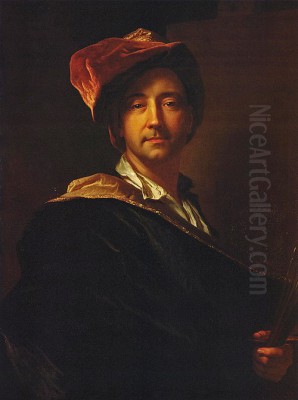
Hyacinthe Rigaud stands as one of the most significant and influential portrait painters of the French Baroque era. Flourishing during the latter part of the reign of Louis XIV, the Sun King, and continuing into the era of Louis XV, Rigaud became the preeminent visual chronicler of the French monarchy, aristocracy, and high society. His masterful ability to capture not only a likeness but also the power, prestige, and elaborate fashions of his sitters made him the most sought-after portraitist of his time. His iconic image of Louis XIV in coronation robes remains one of the defining symbols of absolute monarchy and a cornerstone of French art history.
Early Life and Artistic Formation
Born Jacint Rigau-Ros i Serra in Perpignan in 1659, a city then recently annexed by France but deeply rooted in Catalan culture, Rigaud came from a family with artistic inclinations. While his grandfather and uncle were tailors, his father served as both a tailor and a painter, providing an early exposure to the visual arts. Though initially apprenticed in his father's trade, the young Hyacinthe soon gravitated towards painting, demonstrating a clear talent that demanded formal training.
His artistic education began in earnest in Montpellier around 1671, where he studied for several years. His primary teacher was Antoine Ranc, a painter whose style reflected the influence of Flemish masters like Peter Paul Rubens and Anthony van Dyck. This early immersion in the rich colours, dynamic compositions, and detailed textures characteristic of the Flemish Baroque would profoundly shape Rigaud's own developing style. He also reportedly studied with Paul Petzet during this period. Following his time in Montpellier, Rigaud spent time in Lyon, further honing his skills before making the pivotal decision to move to Paris in 1681.
Ascendancy in Paris: The Path to Royal Favour
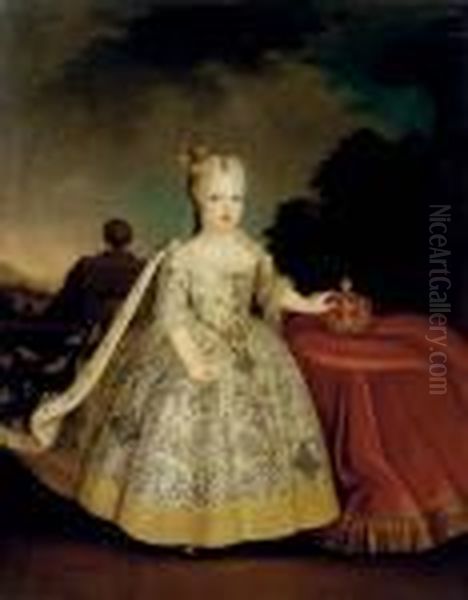
Upon arriving in Paris, the ambitious young painter quickly sought recognition within the established art institutions. He enrolled in the prestigious Académie Royale de Peinture et de Sculpture (Royal Academy of Painting and Sculpture), the epicentre of artistic life and patronage in France. His talent was immediately apparent; in 1682, he won the coveted Prix de Rome, a prize that typically funded study in Italy. However, according to accounts, the influential First Painter to the King, Charles Le Brun, advised Rigaud to forgo the trip to Rome and instead concentrate on portraiture in Paris, recognizing his exceptional aptitude for the genre.
Rigaud heeded this advice, dedicating himself to portrait painting. His skill in capturing likenesses, combined with his burgeoning ability to convey the sitter's status through pose, costume, and setting, quickly attracted a distinguished clientele. He began receiving commissions from wealthy financiers, nobles, and fellow artists, steadily building his reputation within the competitive Parisian art world. His early works already displayed the hallmarks of his mature style: technical precision, a rich palette, and a sense of dignified presence.
The Court Painter of Versailles
The turning point in Rigaud's career came in 1688 when he received his first commission to paint King Louis XIV. Although not the grand state portrait for which he would later become famous, this initial work pleased the monarch and opened the doors to the highest levels of patronage. Over the following years, Rigaud became the favoured portraitist of the royal family and the upper echelons of the French court residing at the magnificent Palace of Versailles.
His ability to create images that radiated authority, majesty, and the opulent grandeur associated with the Sun King's reign made him indispensable. He painted numerous members of the royal family, including the King's son, the Grand Dauphin, and his grandson, Philip, Duke of Anjou (who would become King Philip V of Spain). Rigaud's portraits became the official images disseminated throughout France and Europe, shaping the visual identity of the French monarchy during its zenith.
Masterpiece: The Portrait of Louis XIV
Rigaud's most celebrated work, and arguably the most famous royal portrait in Western art, is the Portrait of Louis XIV in Coronation Robes, completed in 1701. Commissioned initially by the King as a gift for his grandson, Philip V of Spain, Louis XIV was reportedly so pleased with the result that he decided to keep the original for himself and ordered a copy sent to Spain instead. The painting, now housed in the Musée du Louvre in Paris (with the copy at Versailles), is the definitive image of the Sun King in his absolute power.
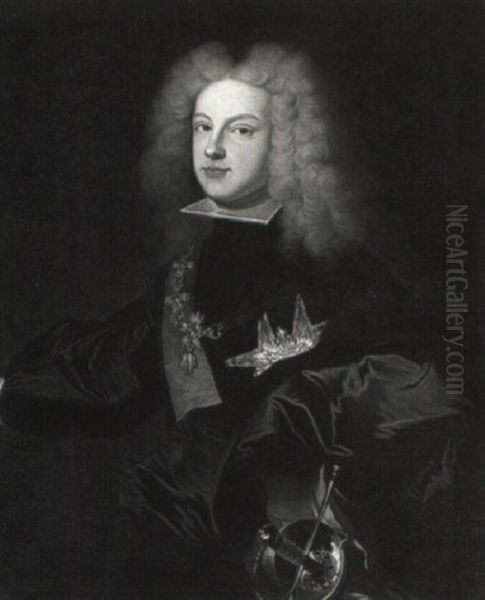
The portrait depicts the 63-year-old monarch standing full-length, three-quarters turned towards the viewer, exuding an air of regal confidence despite his age. He wears the lavish blue velvet coronation robes lined with ermine and embroidered with the fleur-de-lis, the symbol of French royalty. The setting is opulent, featuring a marble column, rich drapery, and a balustrade. Louis XIV leans lightly on his scepter, while the crown rests on a cushion nearby, alongside the Hand of Justice. His pose, derived from classical sculpture, combines formality with a sense of poised command. Rigaud masterfully renders the textures of silk, velvet, lace, and ermine, emphasizing the material wealth and splendour of the monarchy. More than just a likeness, the painting is a powerful piece of political propaganda, embodying the divine right of kings and the concept of absolute rule.
Artistic Style and Technique: The Baroque Grandeur
Hyacinthe Rigaud's style is synonymous with the grandeur and drama of the High Baroque. His portraits are characterized by several key elements. He employed dramatic lighting, often using strong contrasts between light and shadow (chiaroscuro) to model forms and create a sense of theatricality, drawing the viewer's eye to the sitter's face and important details of their attire. His colour palettes were rich and vibrant, favouring deep reds, blues, and golds that conveyed luxury and status.
Compositionally, Rigaud favoured imposing formats, often full-length or three-quarter length, placing his subjects in elaborate settings that included classical columns, sweeping velvet curtains, and sometimes glimpses of landscapes or architectural backgrounds. These elements served not just as decoration but as signifiers of the sitter's elevated social standing. The poses he chose were carefully orchestrated – formal, dignified, and often incorporating a sense of movement or contrapposto, lending vitality to the figures despite their ceremonial stiffness.
Perhaps most famously, Rigaud excelled in the meticulous rendering of fabrics and accessories. He captured the sheen of silk, the plushness of velvet, the intricate patterns of lace, and the gleam of jewels and armour with astonishing precision. This attention to detail was crucial, as clothing and accoutrements were vital indicators of rank and wealth in the hierarchical society of the Ancien Régime. While his portraits often idealized his sitters, emphasizing their authority and grace, Rigaud also possessed a keen ability to capture a convincing individual likeness, particularly in the face and hands, grounding the official grandeur in a recognizable human presence.
Influences and Artistic Circle
Rigaud's art was deeply informed by the masters who came before him. The influence of the Flemish Baroque painters Peter Paul Rubens and Anthony van Dyck is undeniable, particularly Van Dyck's elegant and aristocratic portrait style, which had set the standard across Europe. Rigaud adapted their dynamism and richness to the specific demands of the French court under Louis XIV. His early teacher, Antoine Ranc, had directly transmitted these influences.
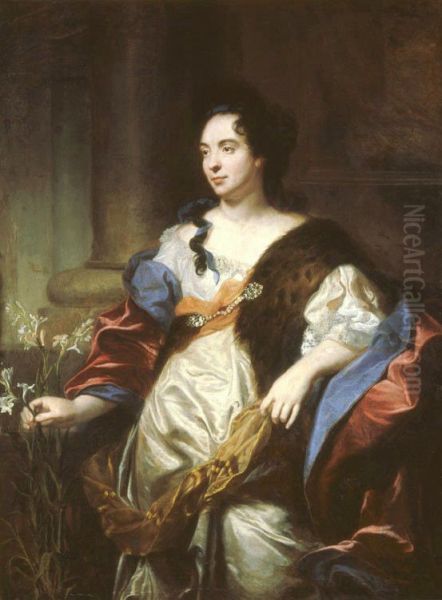
Within the Parisian art scene, Rigaud was a dominant figure but not without contemporaries and rivals. His most notable counterpart was Nicolas de Largillière, another highly successful portraitist. While their styles shared Baroque characteristics, they often catered to slightly different clienteles; Rigaud was primarily the painter of the royal family and the highest nobility, while Largillière found favour with the wealthy bourgeoisie, financiers, and municipal officials, though their paths certainly crossed.
Rigaud interacted with artists in other media as well. He had connections with the sculptor Martin Desjardins, who, like Rigaud, worked on commissions glorifying Louis XIV. He also painted portraits of fellow artists, such as Charles de La Fosse. His influence extended through his students and workshop assistants, ensuring the continuation of his style. Painters like Jean Ranc (Antoine's son), who later worked for the Spanish court, carried elements of Rigaud's manner abroad. Other prominent portraitists active during parts of Rigaud's career included François de Troy and Jean-Baptiste Santerre.
The Workshop Practice and Commercial Success
The demand for Rigaud's portraits was immense, far exceeding what one artist could produce alone. Like many successful painters of his era, Rigaud maintained a large and highly organized workshop to help manage the workload. He employed numerous assistants and specialists, each potentially responsible for specific parts of the painting process. While Rigaud himself would typically paint the most crucial elements – the face and hands – and oversee the entire composition, assistants might handle the elaborate drapery, architectural backgrounds, armour, or even paint replicas of successful portraits.
This division of labour allowed for efficient production without necessarily compromising the overall quality, as Rigaud maintained strict control and would apply the finishing touches. Among his known collaborators or assistants was Jean-Marc Nattier (often spelled Jean-Michel Nattier), who would later become a famous portraitist in his own right, known for his Rococo depictions of court ladies. Rigaud's studio meticulously kept account books, known as the livres de comptes, which documented his commissions, sitters, and prices, providing invaluable information for art historians today. This efficient system, combined with the practice of producing studio replicas and authorizing engravings after his paintings, contributed significantly to Rigaud's fame and financial success, making his images widely accessible.
Notable Works Beyond the Sun King
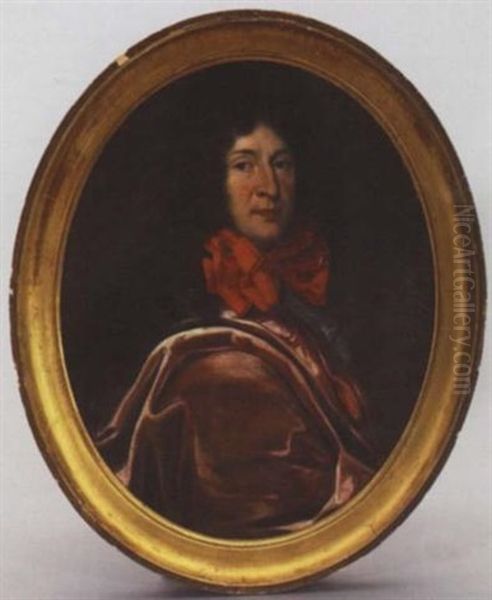
While the 1701 portrait of Louis XIV remains his signature work, Rigaud's prolific career yielded hundreds of portraits capturing the elite of his time. He continued to serve the monarchy under Louis XV, painting the young king in his coronation robes in 1715 and again later in life (around 1730). His portrait of Louis XIV's grandson, Philip V of Spain (c. 1700), is another powerful image of Bourbon royalty, painted around the time of his accession to the Spanish throne.
Rigaud also painted other European royalty, such as Augustus III of Poland. His self-portraits offer fascinating glimpses of the artist himself, including the youthful Self-Portrait with Turban (1698) and later depictions like the Self-Portrait in a Blue Cap (1711), showcasing his confidence and status. A particularly striking work is the Portrait of Gaspard de Gueidan (1735), depicting a magistrate from Aix-en-Provence unusually playing the bagpipes, demonstrating Rigaud's versatility.
Beyond royalty and high nobility, his sitters included prominent church figures like the Cardinal de Bouillon, military leaders, financiers, intellectuals, and fellow artists. A testament to his personal affections is the touching double portrait of his own mother, Portrait of the Artist's Mother, Marie Serre (1695), showing a more intimate side of his artistry. Each portrait, whether grand state commission or a more personal depiction, reflects Rigaud's consistent technical brilliance and his understanding of how to visually articulate identity and status.
Later Life, Honors, and Legacy
Rigaud's success brought him considerable recognition and honours. He became a full member of the Académie Royale in 1700, later rising through its ranks to become a professor. In the 1730s (sources vary slightly on the exact year, often cited as 1733 or 1735), he reached the pinnacle of his profession by being appointed Director of the Academy. He was also ennobled, receiving the prestigious Order of Saint Michael, and was granted a royal pension, cementing his elevated status.
His personal life was marked by two marriages. His second wife, Elisabeth de Gouy, outlived him and inherited his estate. Despite his professional success and long life, Rigaud had no children. He remained active as a painter well into his later years, finally passing away in Paris in December 1743 at the venerable age of 84.
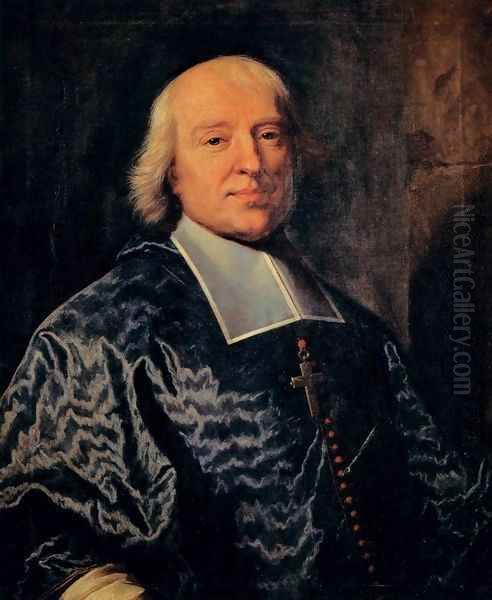
Hyacinthe Rigaud's legacy is immense. He defined the image of French absolute monarchy and set the standard for formal state portraiture throughout Europe for decades. His masterful blend of realistic likeness, idealized grandeur, and meticulous attention to the details of status profoundly influenced subsequent generations of portrait painters. While the lighter, more intimate Rococo style would emerge after him, artists like Maurice Quentin de La Tour still operated within the tradition of court portraiture that Rigaud had perfected. His works remain essential documents of the leading figures of his time and stand as masterpieces of French Baroque art.
Conclusion: Chronicler of an Age
Hyacinthe Rigaud was more than just a painter; he was the visual architect of an era's image. As the premier portraitist of the courts of Louis XIV and Louis XV, he captured the essence of French power and prestige during the height of the Baroque period. Through his technical virtuosity, his understanding of symbolism and status, and his prolific output, he created an enduring visual record of the faces that defined the Ancien Régime. From the iconic majesty of the Sun King to the dignified presence of nobles and intellectuals, Rigaud's portraits continue to command attention, offering a window into the opulent world of Baroque France and securing his place as one of the great masters of European portraiture.